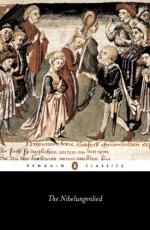|
This section contains 16,586 words (approx. 56 pages at 300 words per page) |

|
SOURCE: “The Nibelungenlied: A Psychological Approach” in A Companion to the “Nibelungenlied”, edited by Winder McConnell, Camden House, 1998, pp. 172-205.
In the following essay, McConnell applies analytical psychology to an exploration of the motivations and dreams of the Nibelungenlied's main characters and their relationships, finding much evidence of repression.
Science, particularly as evinced in the work of the British biologist, Rupert Sheldrake, as well as in the research of the Swiss physician and psychoanalyst, Willy Obrist, has produced yet further evidence of the validity of core ideas postulated almost a century ago by Carl Gustav Jung, foremost among them the concept of the archetypes of the collective unconscious.1 It seems reasonable to assume that, as a consequence, greater links, if not cohesion, might have arisen between such (apparently) diverse areas as comparative mythology and religion, literature, biology, and psychology. Yet, despite the far-reaching ramifications of such studies...
|
This section contains 16,586 words (approx. 56 pages at 300 words per page) |

|


